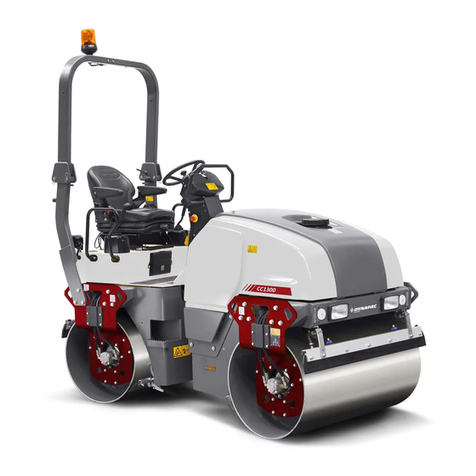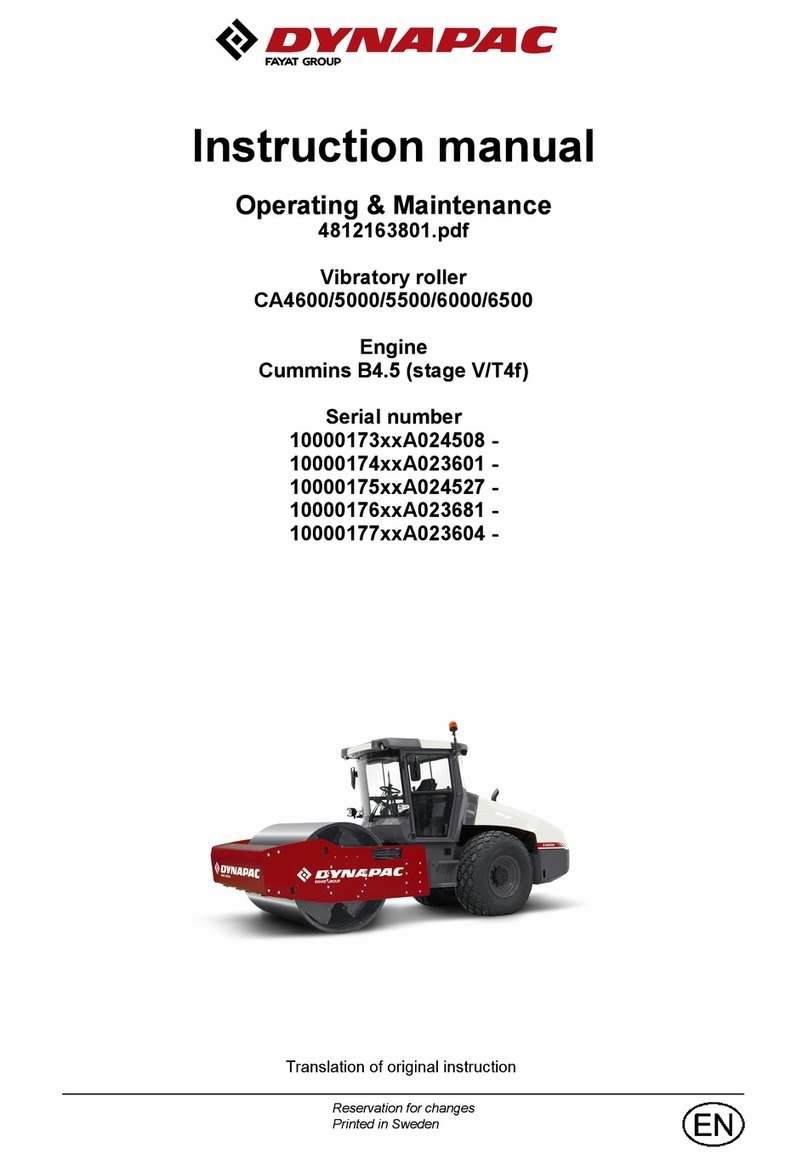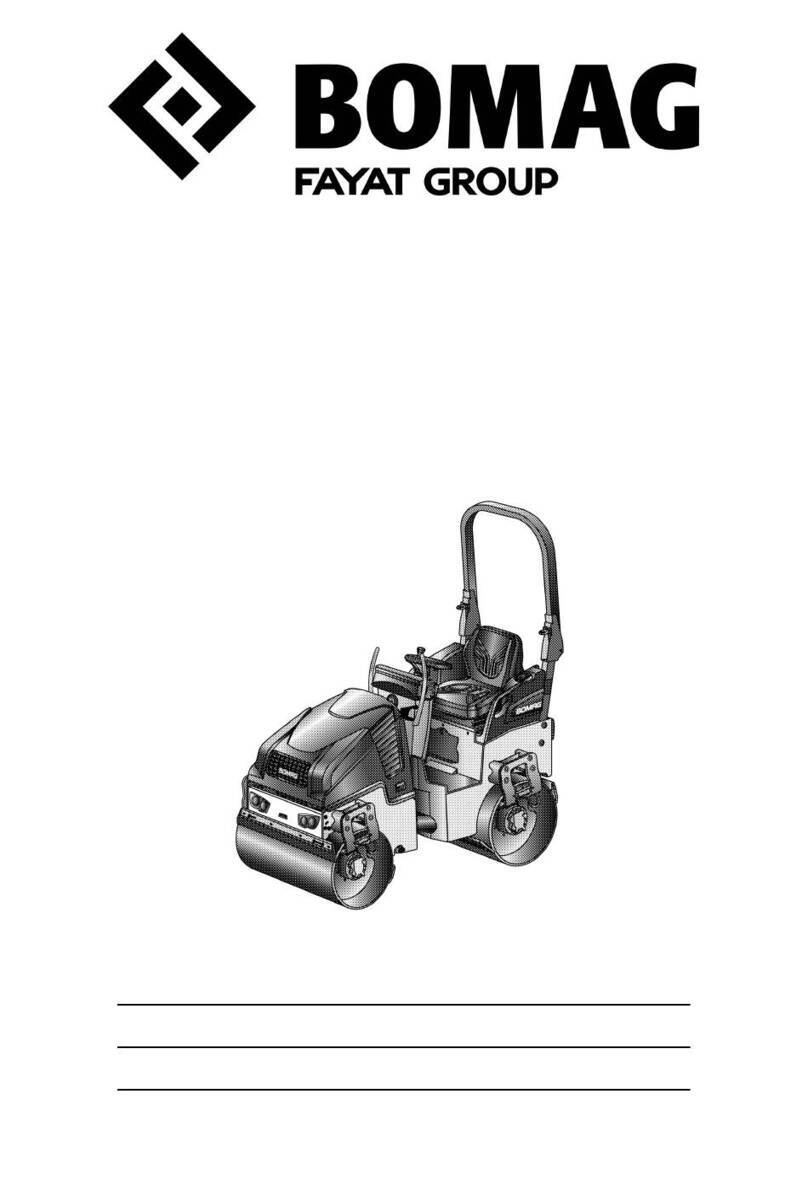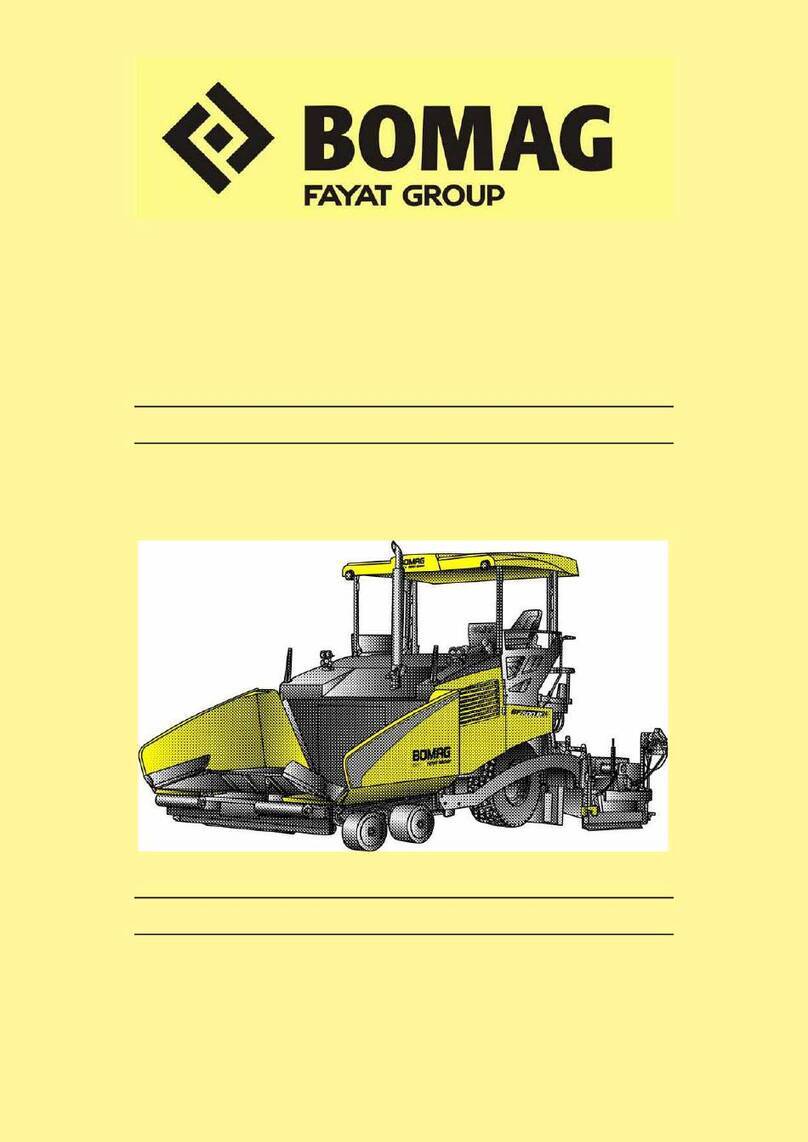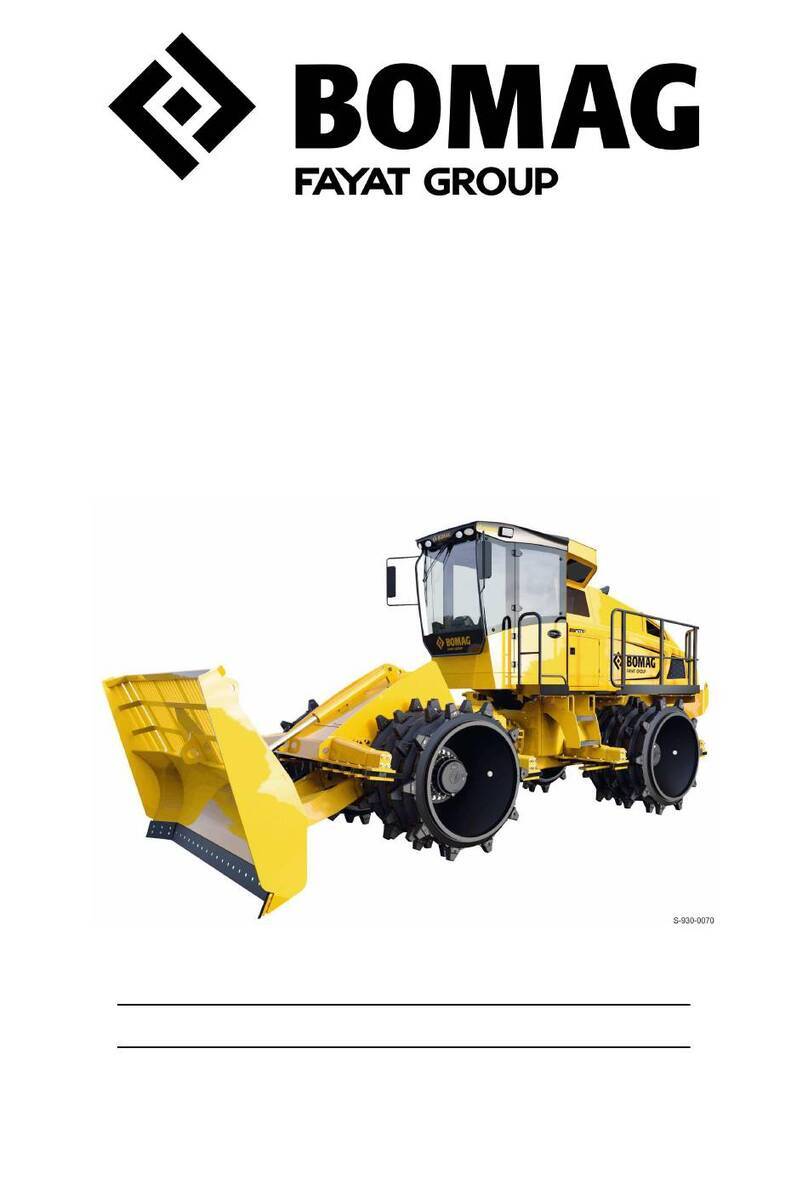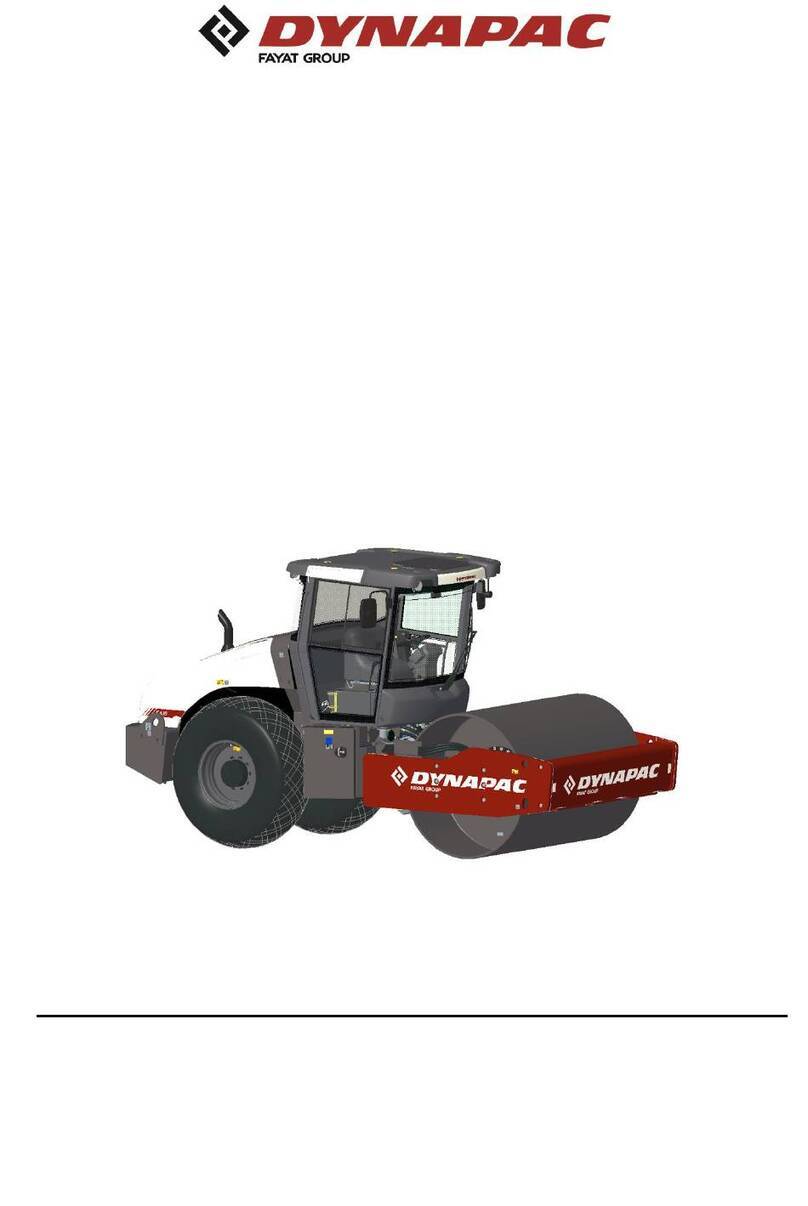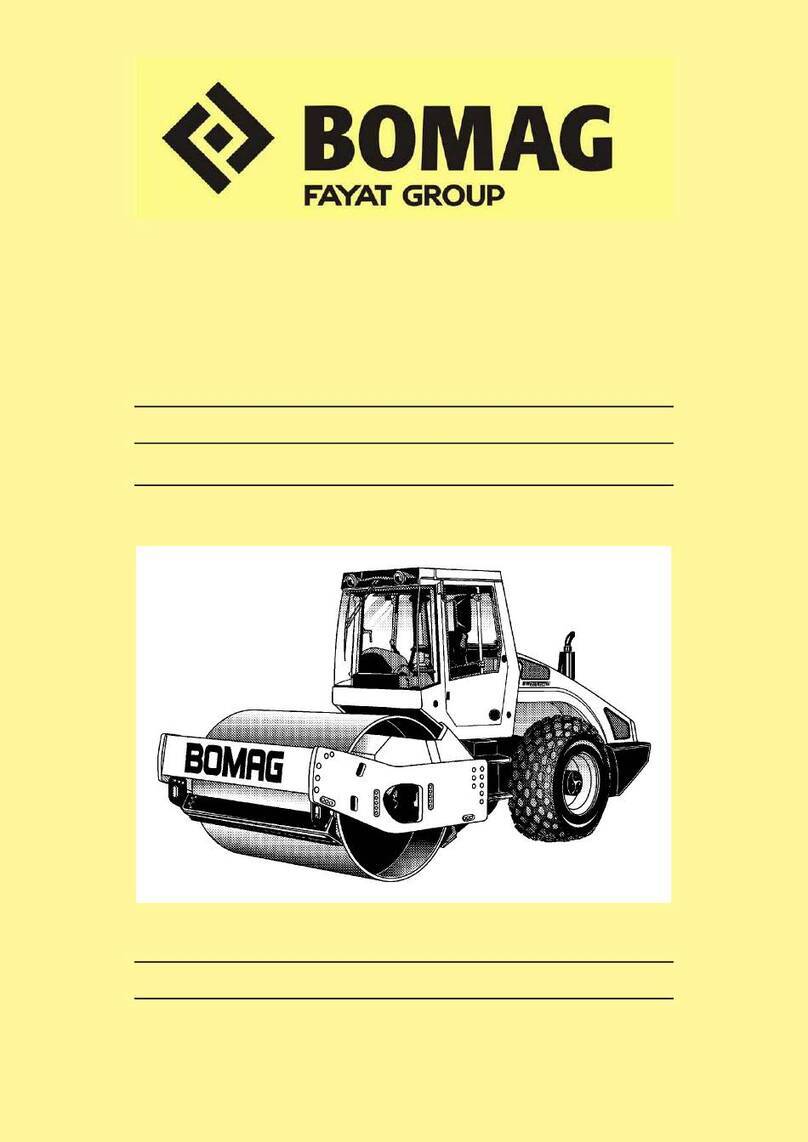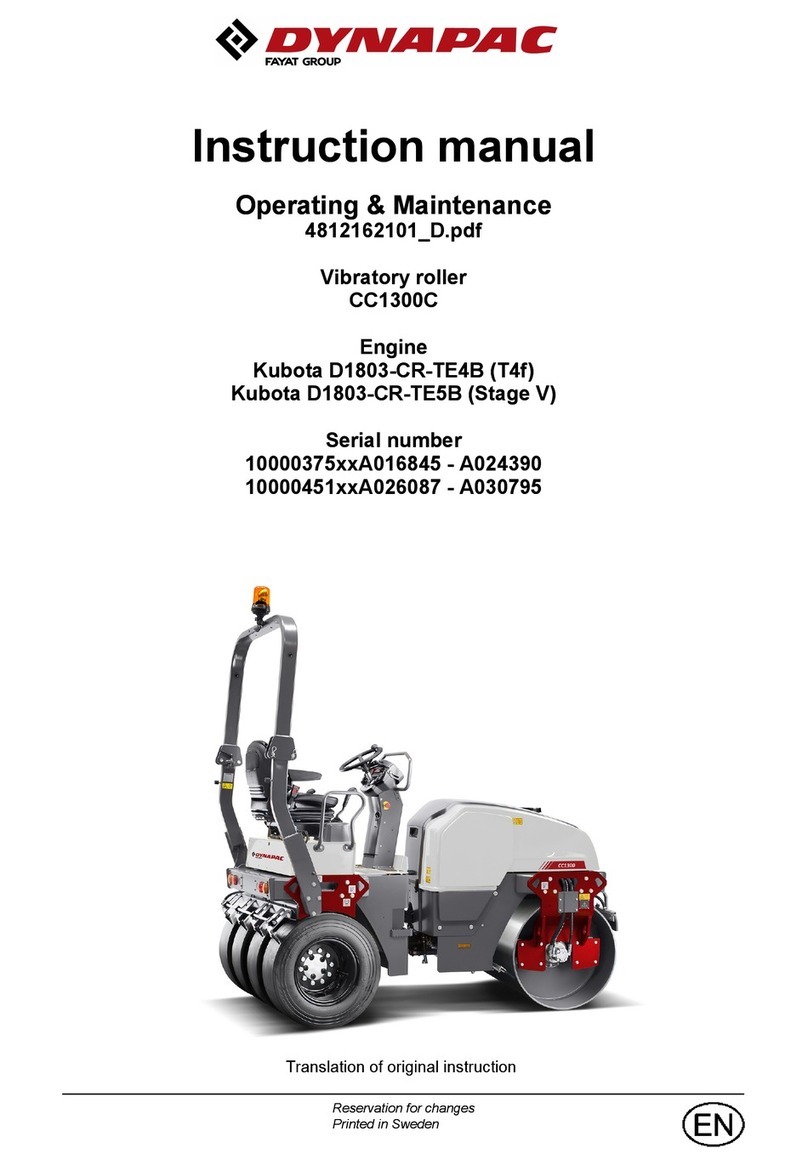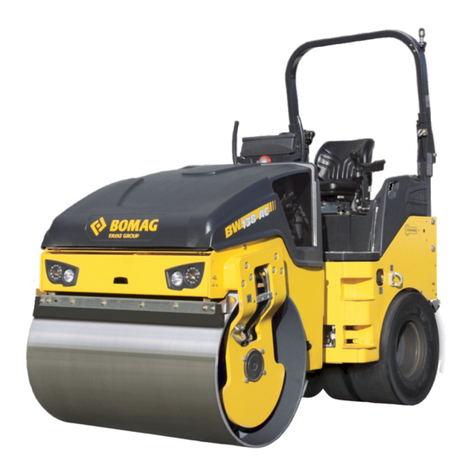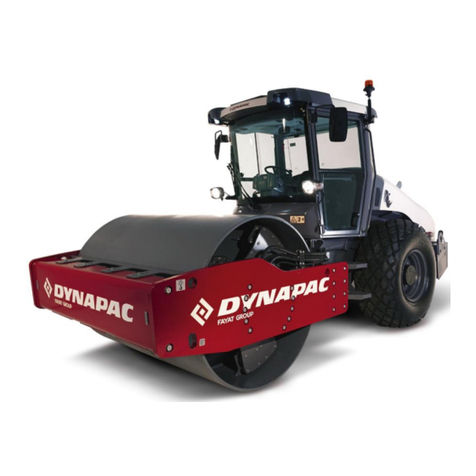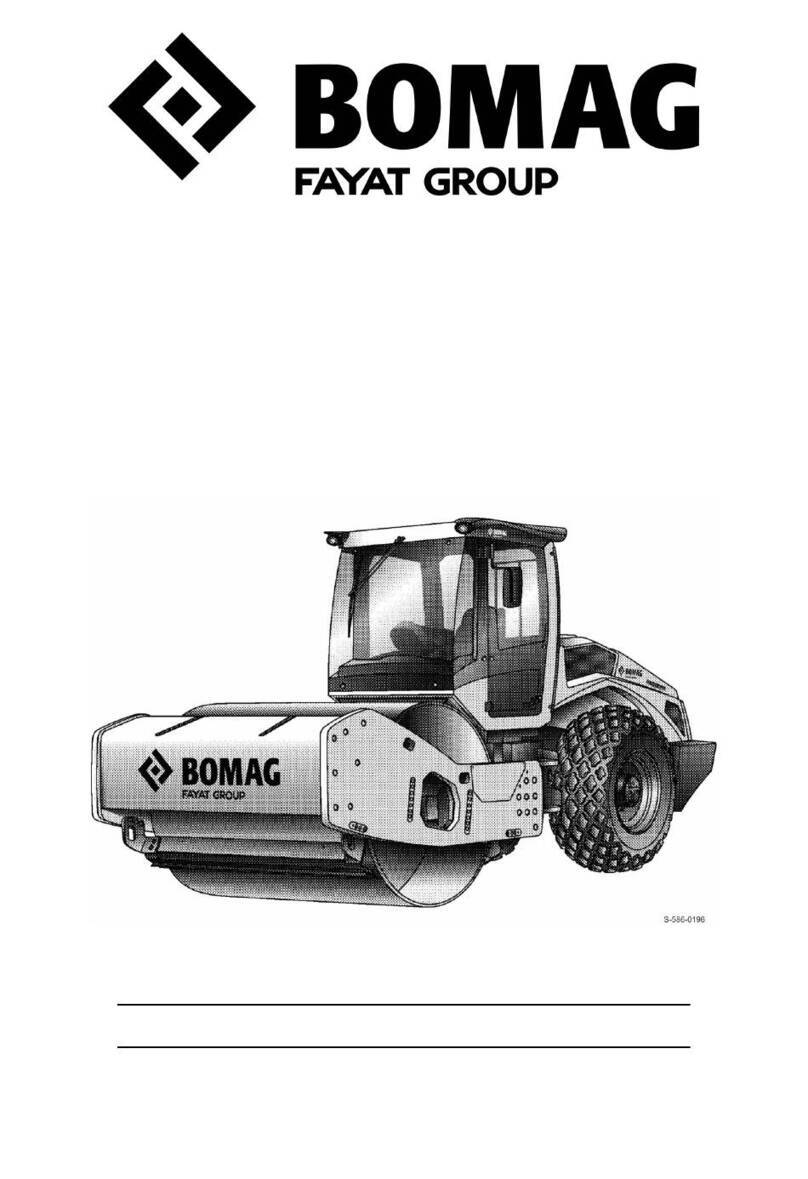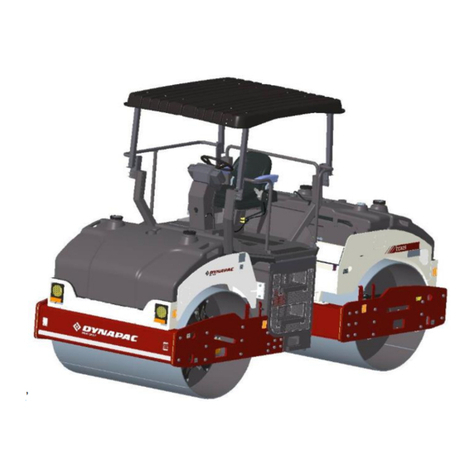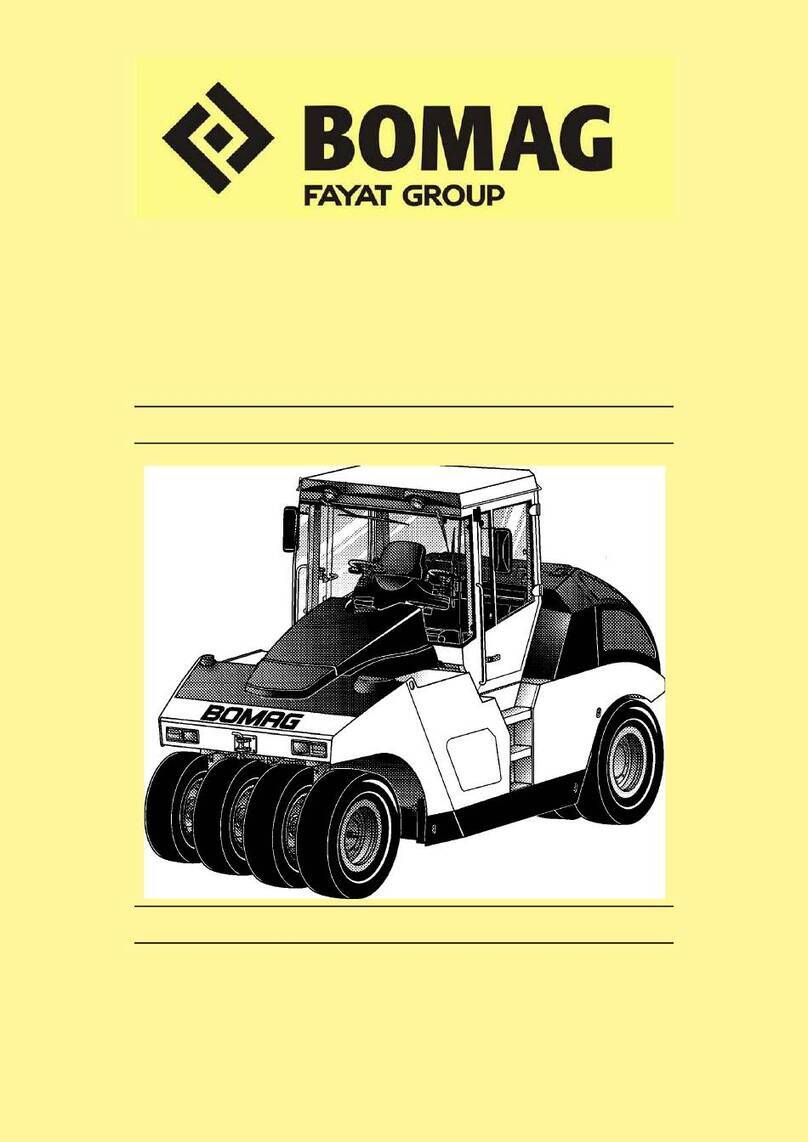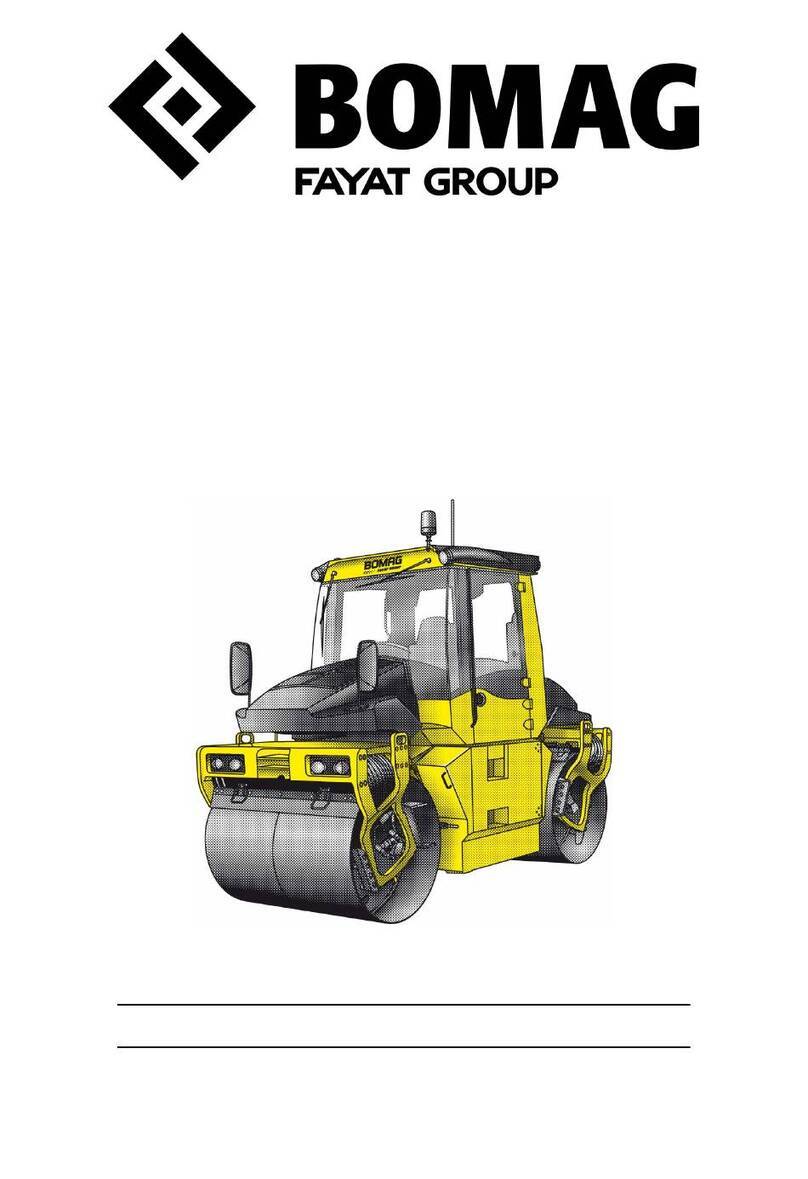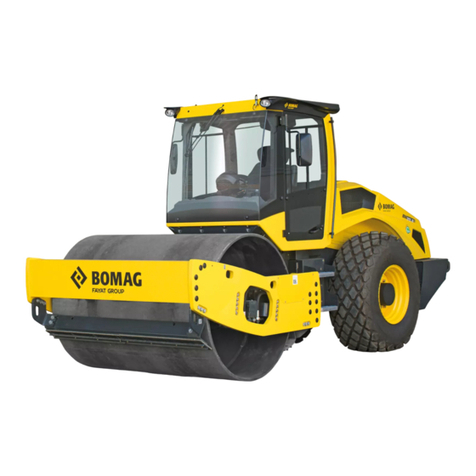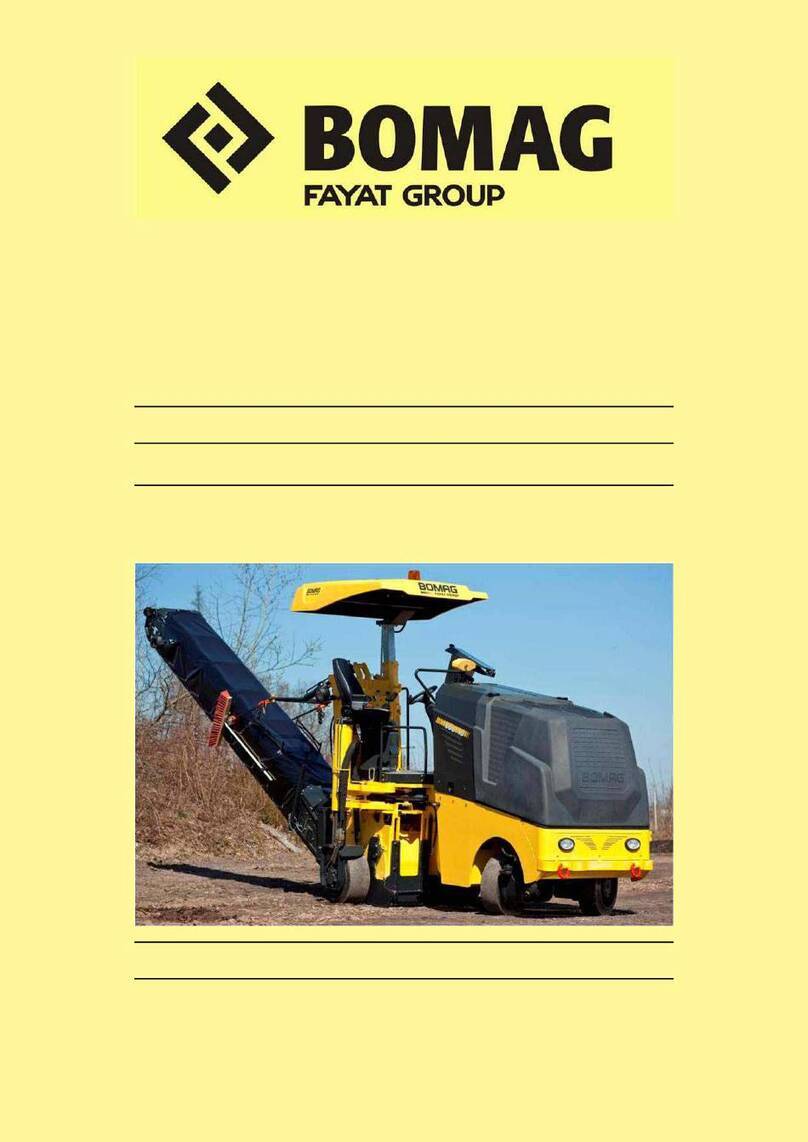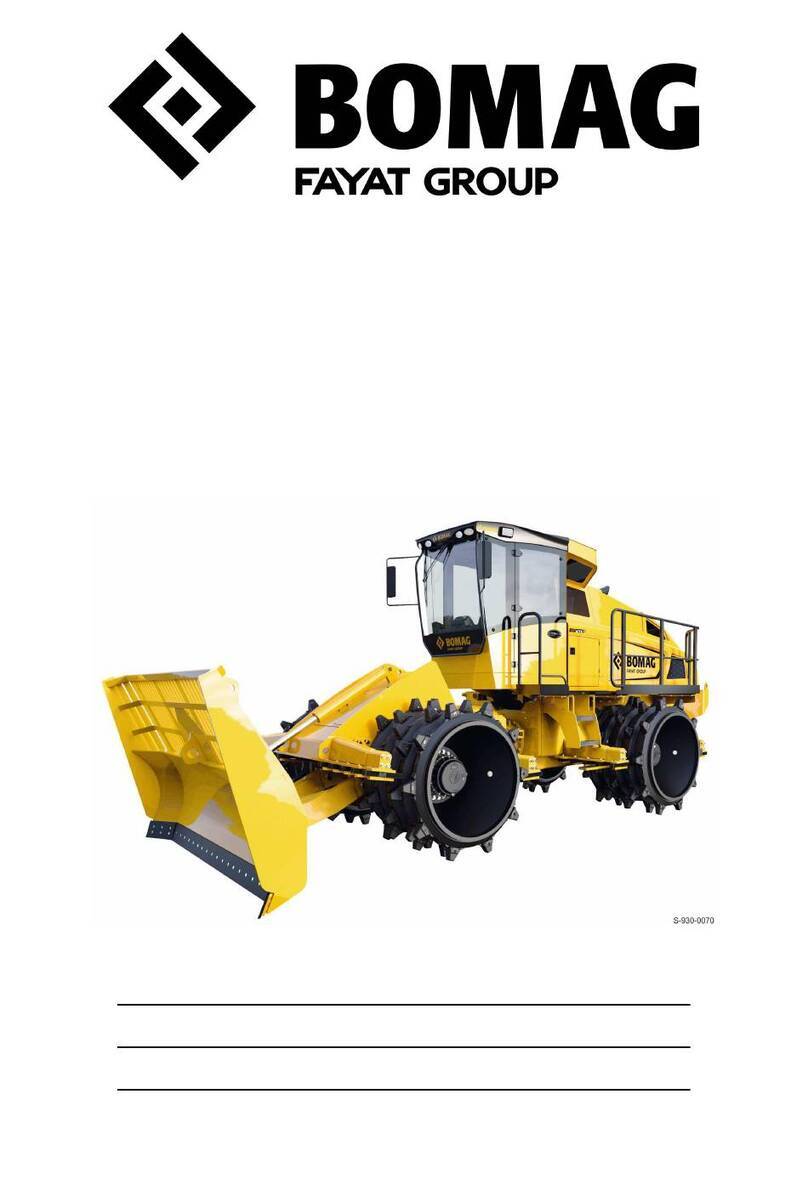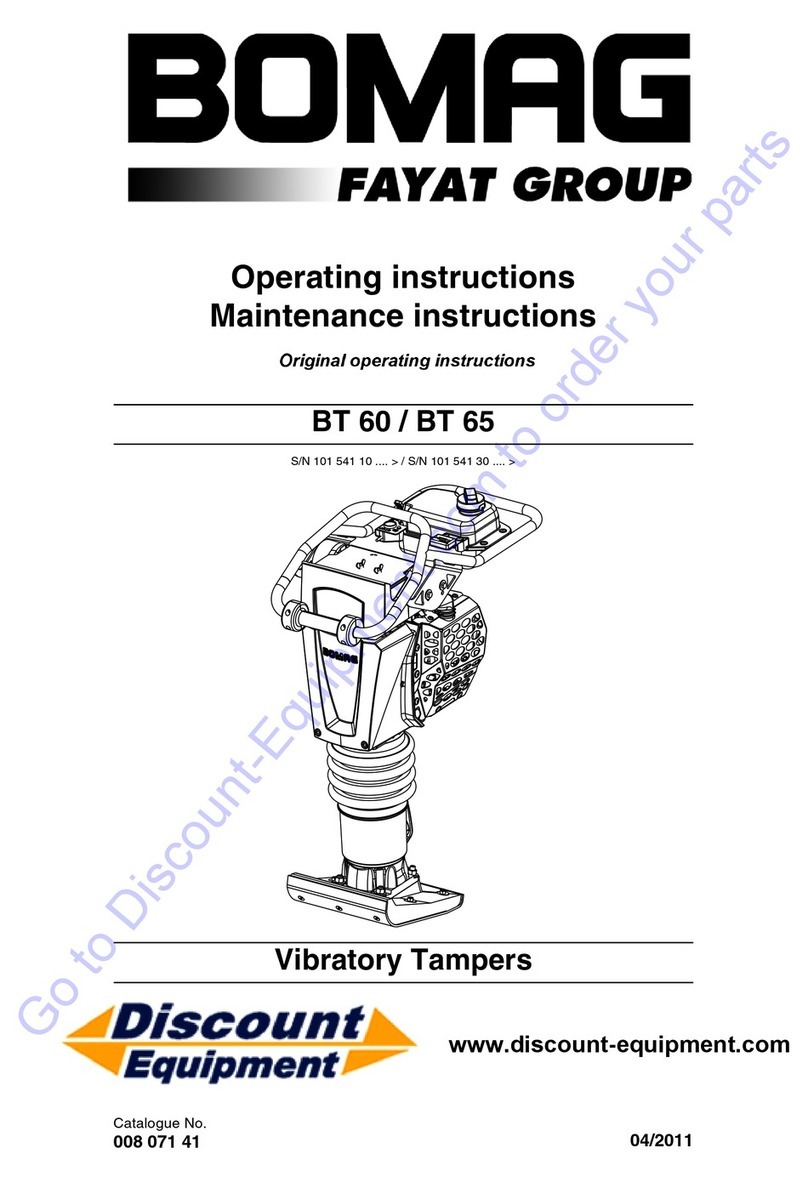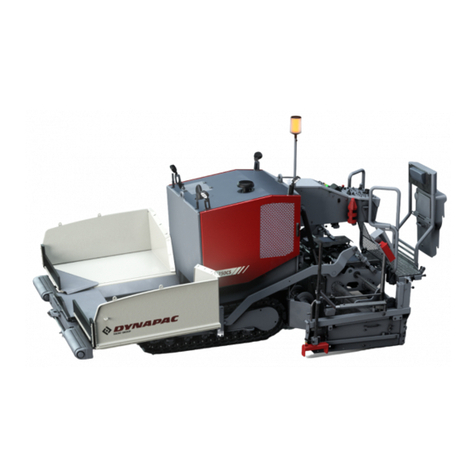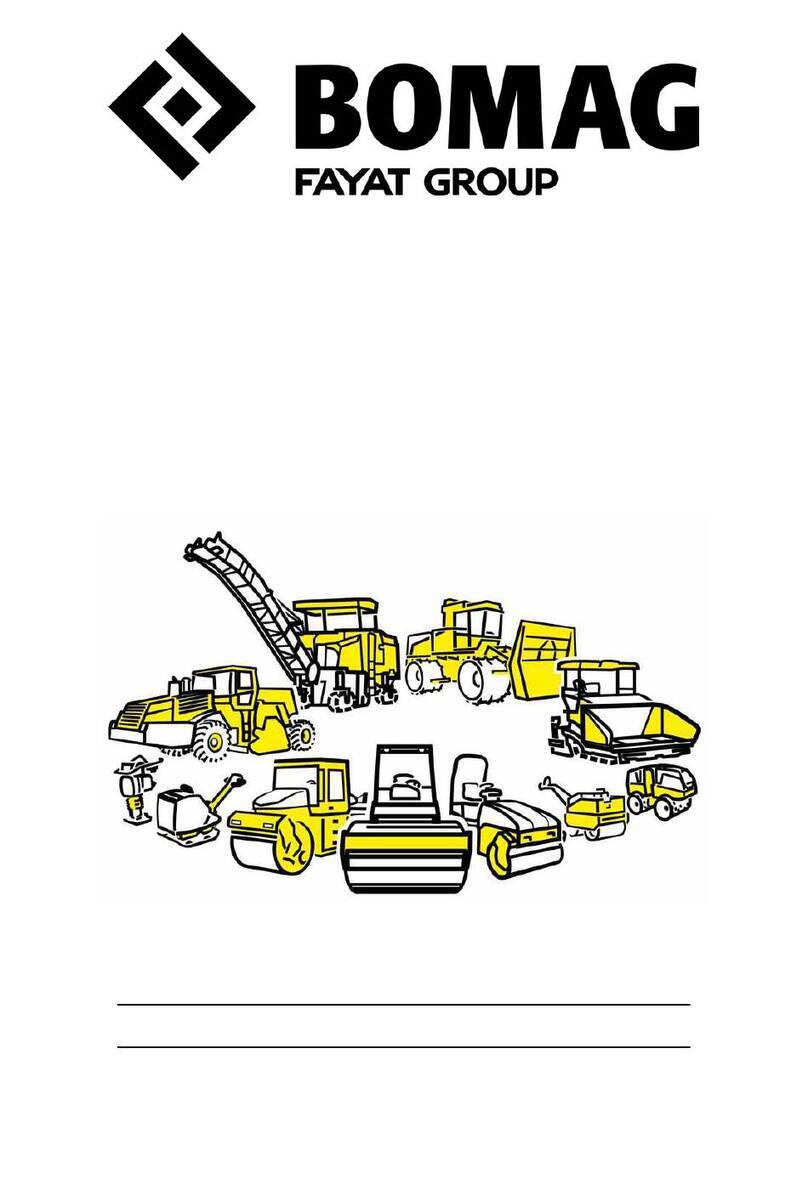
Table of Contents
BOMAG 5008 917 73
7.24 Block diagram Emergency Stop functions 288
7.25 Electronic control units 289
7.26 Checking the voltage supply for the control unit 291
7.27 Diagnostics concept 299
Error codes -- general information 303
8.1 Error codes - BF800 -- general information 304
Input codes 307
9.1 Input codes -- Display: Function and operation 308
9.2 Input codes -- automatic calibration of currents in the travel system 309
9.3 Input codes -- manual calibration of currents in the travel system 312
9.4 Input codes -- travel signal by push button for max. screed relief 315
9.5 Input codes -- Changing the type of speed potentiometer 317
9.6 Input codes -- Activating/deactivating the screed heat in low idle speed 318
9.7 Input codes -- activate/deactivate the cleaning function 319
9.8 Input codes -- Saving/loading TCU settings 320
9.9 Input codes -- Teaching L.C.S. Function 321
9.10 Input codes -- changing the tamper start and stop ramps 323
9.11 Input codes -- Changing the currents for the tamper pump 326
9.12 Input codes -- changing the tamper start and stop ramps 329
9.13 Input codes -- Changing the currents for the vibration pump 332
9.14 Input codes -- Saving/loading SCU settings 335
9.15 Input codes -- Restoring factory settings of the SCU 336
9.16 Input codes -- Activate/deactivate hydraulic front gate 337
9.17 Input codes -- Changing the currents in the auger pumps 338
9.18 Input codes -- Change the auger start / stop ramps 341
9.19 Input codes -- Changing the currents in the scraper belt pumps 344
9.20 Input codes -- Enable/disable lifting the auger block together with the screed
347
9.21 Input codes -- Saving/loading MCU settings 348
9.22 Input codes -- Restoring factory settings of the MCU 349
9.23 Input codes -- driving against the closed brake 350
9.24 Input codes -- showing logged errors 351
9.25 Input codes -- showing logged errors with operating hours 352
9.26 Input codes -- deleting the error log 353
Replacement of components 355
10.1 How to proceed when replacing components? 356
Material hopper, description 357
11.1 Material hopper and transport 358
Vibrating screed, description 365
12.1 Screed 366
Basic settings on the screed 371
13.1 Notes on the screed adjustment (type S500 & S600) 372
13.2 Bringing the straight crossfalls to zero position 373
13.3 Aligning basic screed and mobile sections 374
Assembling the screed extensions 377
14.1 Notes on assembling screed extensions 378
14.2 Assembling the screed extensions 381
Find manuals at https://best-manuals.com
